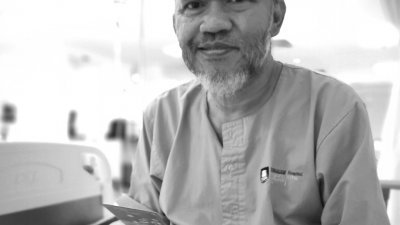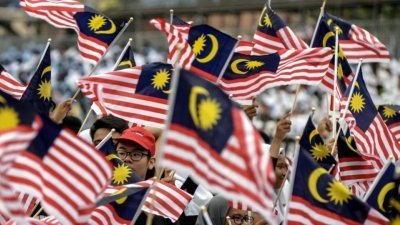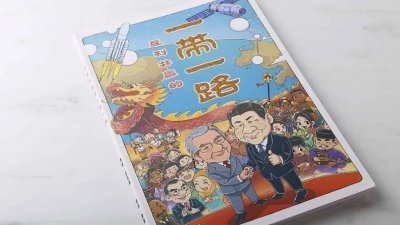近日称霸大马票房冠军的马来电影《Mat Kilau》,不只以抗英领袖Mat Kilau和其在1880年代于彭亨与英国殖民统治斗争的虚构描绘吸引了大批观众,也牵引出许多争议。
锡克教徒联合会的马来西亚分会就公开谴责《Mat Kilau》电影将其他族群描绘成“反派”,以及有关影片具争议和令人反感的场景,将可能导致本国种族和宗教关系不和。
从这部电影中,我们也可提出其他重要质问。
其中有:
1.学者和历史学家批评了电影中主要情节、主题和人物的历史准确性。电影的免责声明:“电影中的人物和事件是虚构的”应该可提醒观众,有关电影的主要目的是娱乐,也许种族和宗教宣传是次要目标。
2.公众也关注,是否应该用纳税人的钱来资助私人公司开拍的电影,如果是,电影票房收入又要如何分配于电影制片人和纳税人。尤其,这部电影在首13天的票房收入达到了5130万令吉。这票房收入一部分应该归属国家电影发展局(FINAS),国家电影发展局是该电影主要赞助商,并为电影的数百万制作预算做出了贡献。然后,FINAS可以用此收益来资助其他具有教育价值的电影制作,例如有关环境保护和文化主题的。锡克教徒联合会和其他民族主义组织肯定会同意这建议。
3.这部电影的重点是关于反英斗争的历史人物。这可以为类似的电影开创先例,讲述在反抗殖民统治历史中,相比起Mat Kilau斗争情况更困难和更长抗争时间的其他人物或组织。通讯及多媒体部副部长拿督扎希迪近日声明,通讯部正计划拍出更多依据我国历史事迹的电影,以打入国际市场,从中可以推断出这种情况很大可能发生。
“由于我们正在规划迈向奥斯卡之路项目,通讯部也在寻找与各方合作,寻求赞助和其他方式。通讯部已与本地大学和电讯公司接洽以协助我们。”
解禁马共电影?
4.在获得官方认可后,公众能否期待看到更多类似以反英战士为主题的电影,例如马来亚共产党人的故事?马共从1930年代到1989年,活跃了50多年,是争取马来亚独立,反英和反帝国主义的主要力量。
在这方面,内政部应重新考虑,解禁对阿米尔拍摄于2006年的电影《最后的共产党员》之禁令。有关电影虽得到电影审查委员会批准,却被内政部禁公映。
5.除了像陈平这样著名的马共领导人之生平和时代故事,许多不仅在马来西亚,也包括世界各地的人们——尤其在当今性别意识抬头的世界里——人们是愿意付费去观赏任何拍摄杰出反殖民运动领袖的电影,如马来左翼领袖珊西娅法姬(Shamsiah Fakeh)和苏丽娜阿都拉(Suriani Abdullah)是如何克服性别鸿沟,这对她们那个时代的女性来说是一个很大的障碍。
正如马哈尼慕沙在其的文章,“1942-89年马来亚共产党女性角色”一文所指出,在大多数游击队抗争中,女性在父权制战争环境下,往往被表现为护士、无线电操作员、信使和男同志的附属角色。在马共,女性领导人不仅要经历各种艰辛和危险,与男同志面对著同样的游击战,并且通过个人的智慧、努力和牺牲,成为受人尊敬的领导人,这些都可是卖座电影的好题材。
6.尽管,《Mat Kilau》电影情节是虚构的,但这部电影也可引发人们去思考一些重要问题,即谁才是真正引入英殖民者的祸首,让英国人接管了彭亨和其他马来联邦,并改变了马来人和移民社会的生活面貌。
虽然在这国家只留下了少数对抗英殖民者的英雄印记,但电影制片人和其他考虑拍类似电影的人,如果他们要以当前电影制作中也很流行的以反派人物为主题,他们就有很多选择。在殖民时代和独立后的马来亚和马来西亚,有关叛徒、合作者、朋党和反派的故事,可说成千上万,足于拍成可匹配好莱坞电影。
对于过去一直面对著严格审查制的本地电影人和影视界人士,如果《Mat Kilau》电影的成功,能开创本地电影和艺术的自由与独立新时代,这连锁效应肯定值得欢迎。
林德宜《从Mat Kilau电影成功谈起》原文:Building on the Success of Mat Kilau
Mat Kilau, the current blockbuster film in the country has generated record audiences not only for its fictional historical depiction of the rebel leader and his fight against British colonial rule in Pahang in the 1880s but also for the controversy which has accompanied its release.
The Malaysian branch of United Sikhs has publicly condemned the film for portraying those from other communities as “villains” and for its controversial and distasteful scenes which could lead to racial and religious misunderstandings in the country.
Other important questions need to be asked arising from this film.
Among them are :
1.Scholars and historians have criticised the flimsy historical accuracy of the main events, themes and personalities. The film’s disclaimer that “the characters and events in the film are fictional” should alert the audience that the main objective of the film is entertainment with perhaps racial and religious propaganda as a subsidiary objective.
2.The public may have other concerns such as whether taxpayers’ money should be used to finance private sector films and, if so, how much of the film’s earnings should accrue to the film producers and taxpayers. Apparently the film in its first 13 days grossed RM51.3 million. Part of this earnings should definitely be reimbursed to the National Film Development Corporation (FINAS) which was a major sponsor and contributed to its multi-million production budget. FINAS can then use the returns to finance the production of other films of educational value such as environmental and cultural subjects. United Sikhs and other nationalist organisations will surely agree to this suggestion
3.The film has focused on a historical character that played a role in the anti-British struggle. This can set a precedent for similar films on other personalities or groups who have fought against colonial rule in circumstances much more difficult and over a longer period than that of Mat Kilau. A strong indication that this can happen can be deduced from the statement by Deputy Communications and Multimedia minister Datuk Zahidi Zainul Abidin that the ministry was planning to produce more films based on the nation's history for the international market.
"As we're in the midst of planning for the Road To Oscars project, the ministry is also looking at opportunities to collaborate with various parties for sponsorship and other means. The ministry has already approached local universities and telecommunication companies to help us.
4.Following up on this official approval, can the public expect to see films based on the lives of other anti-British fighters such as those found in the Malayan Communist Party, the most prominent of anti-British and anti-imperialist movements in Malaya which fought for the country’s independence and was active for over 50 years from the 1930’s until 1989? In this respect the ban imposed by the Home Affairs Ministry on Amir Muhammad’s 2006 film, The Last Communist, despite approval by the Film Censorship Board, needs to be reconsidered and lifted.
5.Besides the lives and times of notable MCP leaders such as Chin Peng, many members of the public - not only in Malaysia but around the world - in today’s gender sensitive world - would be willing to pay to see how prominent anti-colonial leaders such as Shamsiah Fakeh and Suriani Abdullah were able to overcome the gender divide that was a greater burden to women of their time.
As noted by Mahani Musa in her article, “Women in the Malayan Communist Party 1942-89”, women in most guerilla movements have been presented as nurses, wireless operators, couriers and in subsidiary roles to their male colleagues in the patriarchal setting of war. The story of how women leaders in the MCP not only went through hardship and danger and fought the same guerilla battles as their male colleagues but were also able to rise to become respected leaders through their intelligence, hard work and personal sacrifice is probably a best selling movie waiting to be made
6.Ultimately despite its fictional status, the film raises important questions as to who were the real villains that permitted the British to take over Pahang and the other Malay states and ushered in the changes that forever altered the lives of Malays and the immigrant communities for the better and worse.
Although there were few rebel heroes who have left their mark on the country, the film producers and others considering a follow up film are really spoilt for choice should they want to take up the crooks and bad guys stories which is also a popular theme in current film making. The story of traitors, collaborators, cronies and villains in the making of colonial and post independent Malaya and Malaysia can be portrayed with a cast of thousands to match the best of what Hollywood can offer.
Local filmmakers and others engaged in the arts scene in Malaysia who have been heavily censored in the past will definitely welcome the ripple effects from the Mat Kilau film should it usher in a new era of cinematic and artistic freedom and independence.
要看最快最熱資訊,請來Follow我們 《東方日報》WhatsApp Channel.


















